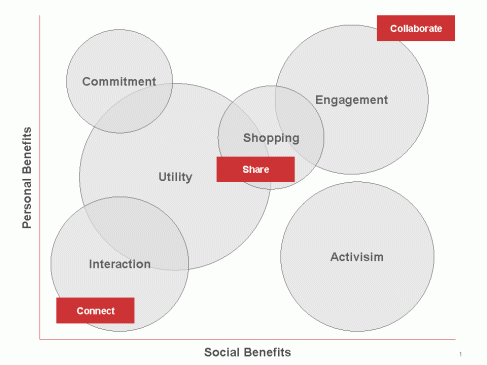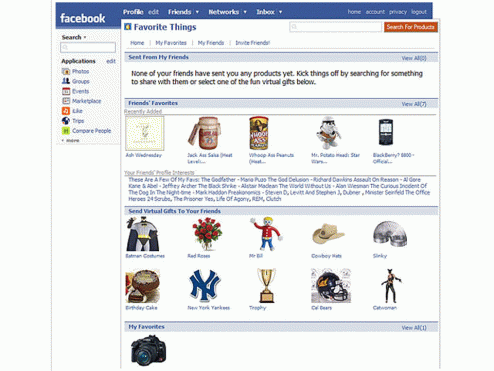Participation in social networks continues to grow seemingly without bounds as more people seek to connect, share and collaborate with likeminded individuals online. Today, hundreds of millions of online users have already signed up, with an increasing number belonging to more than one network.
For green marketers, social networks provide a compelling channel to communicate with consumers that have an affinity for green or are at least open-minded enough to listen. Today, those users can be found across a wide variety of social networks, including both general interest and vertically focused networks that connect those interested in social responsibility or, more specifically, in the environment.
Marketing Green has identified six different types of social networks that appeal to those with a green affinity. Each network type provides the opportunity for users to connect, share and/or collaborate with others online. And because many view green as a social cause, participation in such networks can generate both personal as well as societal benefits. The six types of social networks include the following:
Interaction sites connect online user to facilitate offline interactions. For example, online users can connect with other likeminded individuals for dating or socializing on sites such as Care2, Earthwise Singles, dharmaMatch, Green Drinks, Green Passions, Green Party Passions, Planet Earth Singles and VeggieDate. Alternatively, online users can find out about green events, political rallies or local meet ups on social action sites such as Leonardo DiCaprio’s 11th Hour Action, Care2, Do Something, Meetup, Step It Up, TakingITGlobal, and WorldCoolers.
Other sites allow members to arrange carpools on sites like GishiGo, GoLoco, pooln and WorldCarShare (Yahoo Groups), as well as rent, loan or reuse products (rather than purchase new or dispose of as waste) on sites like freecycle, gigoit, loanables and rentoid.
Marketing Green’s Six Types of Green Social Networks

Commitment sites enable users to share a personal pledge to make their lives more eco-friendly. On certain Commitment sites, users can even collaborate with others to support their pledge or to encourage others to make similar pledges. Examples include sites such as Actics, Low Fly Zone, Make Me Sustainable, PledgeBank, The Carbon Diet, Who On Earth Cares (Aus), Yahoo Green and the “I Am Green” page on Facebook.
Utility sites enable consumers to connect and share online with others that have a green affinity and/or want to live a greener lifestyle. Examples include general interest networks such as Facebook, MySpace, Tribe and Yahoo Groups (focused on green), as well as vertically focused networks such as beTurtle, Care2, Common Circle, Dianovo, ecoMetro, Eco-munnity, Good Tree, Green Bin, Holistic Local, Lime, Neutral Existence, rethos, TheNag (UK), Zaadz and Zelixy among others.
Sites like Baagz are emerging that should, in theory, enable users to connect with a far greater number of online users across the Internet, rather than simply those within a particular social network. Considered an early Web 3.0 application, Baagz leverages semantic web principles to allow software agents to connect people with common interests by reading embedded tags in web content (rather than natural language descriptions).
Shopping sites allow consumers to connect and share green purchases and product reviews. Examples include FiveLimes and Sustainlane. Additionally, traditional social shopping sites such as Kaboodle, StyleHive, ThisNext and Wists include a wide range of eco-friendly (eg, organic) products.
Today, online users have the opportunities to integrate their favorite purchases into their personal profile page on sites like Facebook using a Yahoo web application called “My favorite Things”. This application enables users to share favorite products, create a wish list and send virtual gifts to friends online. Importantly, integration of social shopping into Facebook enriches personal profiles and allows users to connect based on shopping preferences.

Alternatively, consumers have the option to connect with other likeminded consumers based on their brand and/or product affinity. One example is Toyota’s community site for hybrid owners, Hybrid Synergy Drive. Another example is Method’s community of advocates.
Engagement sites enable users to share ideas and collaborate on new ones. These social networks tend to attract members from specific vertical sectors. Examples include local community sites such as ecoTreadsetters (Yokohama Tire), Gusse and Transition Towns (UK); innovation sites such as Green Building Forum (UK), Sustainability Forum and wattwatt; and business forums such as OpenEco (Sun) and OPEN Forum (American Express) among others.
Activism sites enable collaboration to promote change through social and political activism. Example sites include: 2People, Care2, Change, Do Something, GreenVoice, idealist, just cause, Razoo, TakingITGlobal, tree-nation, Wiser Earth and Youth Noise among others.
For marketers, such social networks provide a rich opportunity for messaging to consumers with a green affinity. Today, there are three primary ways in which marketers can communicate with consumers through this channel:
Search. Marketers can bid on contextually relevant search keywords within social networks and provide relevant and engaging content on linked landing pages.
Awareness and Engagement. Marketers can actively engage consumers by placing corporate profiles within social networks, by facilitating the creation of user generated content and by encouraging viral marketing.
The placement of profiles on social networks is a great way to build awareness within and across peer groups online. Users connect to a brand or a cause as an expression of their online identities. Those that do can be effective advocates for a brand (or cause) and brands should actively engage them as such. Moreover, this simple link in a personal profile can provide a powerful way to build awareness within the user’s extended network as it provides a de facto endorsement of the brand or cause by a trusted source.
Additionally, it is important to note that the creation of user-generated content itself can facilitate viral marketing efforts though sharing of content between consumers or via content sharing sites such emPivot, RiverWired and YouTube. Moreover, users may bookmark favorite green content or websites on hunah, Hugg, del.icio.us, Digg and StumbleUpon, encouraging others to also view the content or visit the site as well.
Targeting. Marketers can target consumers within a social network through direct ad placement where possible and appropriate.
Importantly, Facebook has made an announcement that has major implications for how marketers can communicate to members going forward. Essentially, Facebook said that it will allow marketers to target members with ads based on its user’s personal profiles, social connections and even the recent activities of each user’s extended network.
This announcement marks a significant departure in the way social networks have been organized to date. Until now, marketers have had limited opportunity to serve ads directly to users within the social network. With this change, marketers will now have the opportunity to target consumers directly based on attitudinal, behavioral and demographic attributes included directly in or inferred from personal profiles and connections online.
So, marketers should take note. Social networks are proliferating and consumer participation seems to be growing without bounds. For marketers, social networks provide an increasing number of opportunities to communicate with online users that either have a green affinity or perhaps are connected to someone that does. To have the greatest impact, however, marketers should ensure that they align their messaging with the mission of each type of social network. Done right, marketers can have a powerful impact on their brands and the bottom line.



























